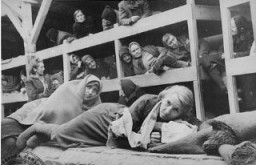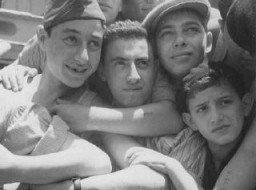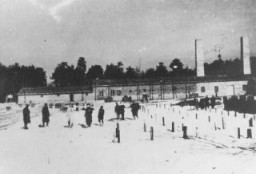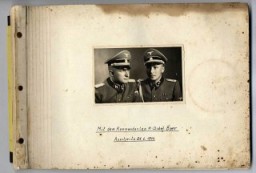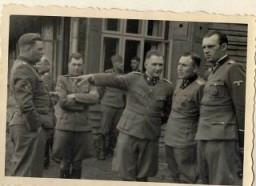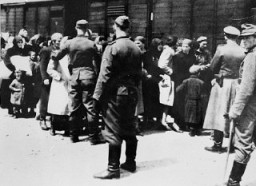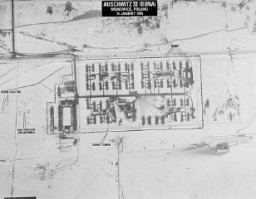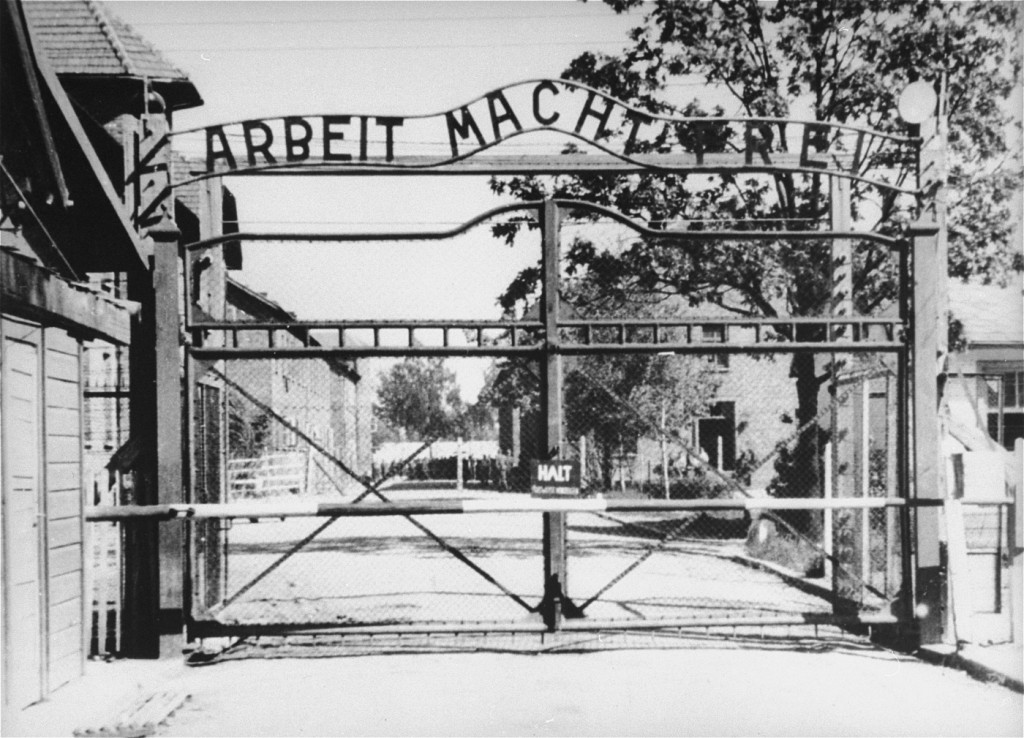
Auschwitz: Key Dates
January 25, 1940
The SS decides to construct a concentration camp near Oswiecim (Auschwitz).
May–June, 1940
The first prisoners arrive at Auschwitz. On May 20, 1940, a transport arrives of about 30 German inmates, categorized as "professional criminals." The SS had selected them from the Sachsenhausen concentration camp outside of Berlin. Less than a month later, on June 14, German authorities in occupied Poland deport 728 Polish prisoners from a prison in Tarnow to Auschwitz. This is the first of many transports of Poles to the Auschwitz camp.
March 1, 1941
Reichsfuehrer SS and Chief of German Police Heinrich Himmler inspects Oswiecim (Auschwitz). Because nearby factories use prisoners for forced labor, Himmler is concerned about the prisoner capacity of the camp. On this visit, he orders both the expansion of Auschwitz I camp facilities to hold 30,000 prisoners and the building of a camp near Birkenau for an expected influx of 100,000 Soviet prisoners of war. Himmler also orders that the camp supply 10,000 prisoners for forced labor to construct an I.G. Farben factory complex at Dwory, about a mile away. Himmler will make additional visits to Auschwitz in 1942, when he will witness the killing of prisoners in the gas chambers.
September 3, 1941
The first gassings of prisoners occur in Auschwitz I. The SS tests Zyklon B gas by killing 600 Soviet prisoners of war and 250 other ill or weak prisoners. Testing takes place in a makeshift gas chamber in the cellar of Block 11 in Auschwitz I. Zyklon B was the commercial name for crystalline hydrogen cyanide gas, manufactured by I.G. Farben and normally used as an insecticide. The "success" of these experiments will lead to the adoption of Zyklon B as the killing agent for the yet-to-be-constructed Auschwitz-Birkenau killing center.
January 25, 1942
SS chief Heinrich Himmler informs Richard Gluecks, the Inspector of Concentration Camps, that 100,000 Jewish men and 50,000 Jewish women would be deported from Germany to Auschwitz as forced laborers.
February 15, 1942
The first transport of Jews from Bytom (Beuthen) in German-annexed Upper Silesia arrives in Auschwitz I. The SS camp authorities kill all those on the transport immediately upon arrival with Zyklon B gas.
December 31, 1942
German SS and police authorities deported approximately 175,000 Jews to Auschwitz in 1942.
January 1–March 31, 1943
German SS and police authorities deport approximately 105,000 Jews to Auschwitz.
January 29, 1943
The Reich Central Office for Security orders all designated Roma (Gypsies) residing in Germany, Austria, and the Protectorate of Bohemia and Moravia to be deported to Auschwitz.
February 26, 1943
The first transport of Roma (Gypsies) from Germany arrives at Auschwitz. Without separating families, the SS authorities house them in Section B-IIe of Auschwitz-Birkenau, which becomes known as the Zigeunerlager ("Gypsy camp"). By the end of 1943, more than 18,000 Roma will be incarcerated there. Eventually, as many as 23,000 Roma will be deported to the Auschwitz camp complex. Of these, approximately 21,000 will be murdered in the gas chambers or die as a result of starvation and disease.
April 1, 1943–March 1944
German SS and police authorities deport approximately 160,000 Jews to Auschwitz.
May 2, 1944
The first two transports of Hungarian Jews arrive in Auschwitz.
July 6, 1944
The deportation of Hungarian Jews is halted by order of Regent Miklos Horthy. The last transport from Hungary arrives on July 11.
August 2, 1944
SS camp authorities murder the last residents—up to 5,000—of the so-called Gypsy family camp in Auschwitz-Birkenau. In all the SS murdered at least 19,000 of the 23,000 Roma (Gypsies) deported to the Auschwitz concentration camp complex.
April 1944–November 1944
SS and Police authorities deport more than 585,000 Jews to Auschwitz.
October 7, 1944
Members of the Jewish prisoner "special detachment" (Sonderkommando) that was forced to remove bodies from the gas chambers and operate the crematoria stage an uprising. They successfully blow up Crematorium IV and kill several guards. Women prisoners had smuggled gunpowder out of nearby factories to members of the Sonderkommando. The SS quickly suppresses the revolt and kills all the Sonderkommando members. On January 6, 1945, just weeks before Soviet forces liberate the camp, the SS will also hang four women who smuggled gunpowder into the camp.
November 25, 1944
As Soviet forces continue to approach, SS chief Heinrich Himmler orders the destruction of the Auschwitz-Birkenau gas chambers and crematoria. During this SS attempt to destroy the evidence of mass killings, prisoners will be forced to dismantle and dynamite the structures.
January 12, 1945
A Soviet offensive breaches the German defenses on the Vistula; Soviet troops take Warsaw and advance rapidly on Krakow and Oswiecim.
January 17–27, 1945
As Soviet units approach, the SS evacuates to the west the prisoners of the Auschwitz concentration camp complex. Tens of thousands of prisoners, mostly Jews, are forced to march to the cities of Wodzislaw and Gliwice in the western part of Upper Silesia. During the march, SS guards shoot anyone who cannot continue. In Wodzislaw and Gliwice, the prisoners will be put on unheated freight trains and deported to concentration camps in Germany, particularly to Flossenbürg, Sachsenhausen, Gross-Rosen, Buchenwald, and Dachau, and to Mauthausen in Austria. In all, nearly 60,000 prisoners are forced on death marches from the Auschwitz camp system. As many as 15,000 die during the forced marches. Thousands more were killed in the days before the evacuation.
January 27, 1945
Soviet troops enter the Auschwitz camp complex and liberate approximately 7,000 prisoners remaining in the camp. During the existence of Auschwitz, the SS camp authorities killed nearly one million Jews from across Europe. Other victims included approximately 74,000 Poles, approximately 21,000 Roma (Gypsies), and approximately 15,000 Soviet prisoners of war.

Series: Auschwitz
Critical Thinking Questions
- How and why did the function of Auschwitz change as the war progressed?
- Where were the camps located? How might the German population and the local community in Poland have been aware of this camp, its purpose, and the conditions within?
- Did the outside world have any knowledge about these camps? If so, what actions were taken by other countries and their officials? What choices do other countries have in the face of mistreatment of civilians?
- How does the example of this camp demonstrate the complexity and the systematic nature of the German efforts to abuse and kill the Jews?
